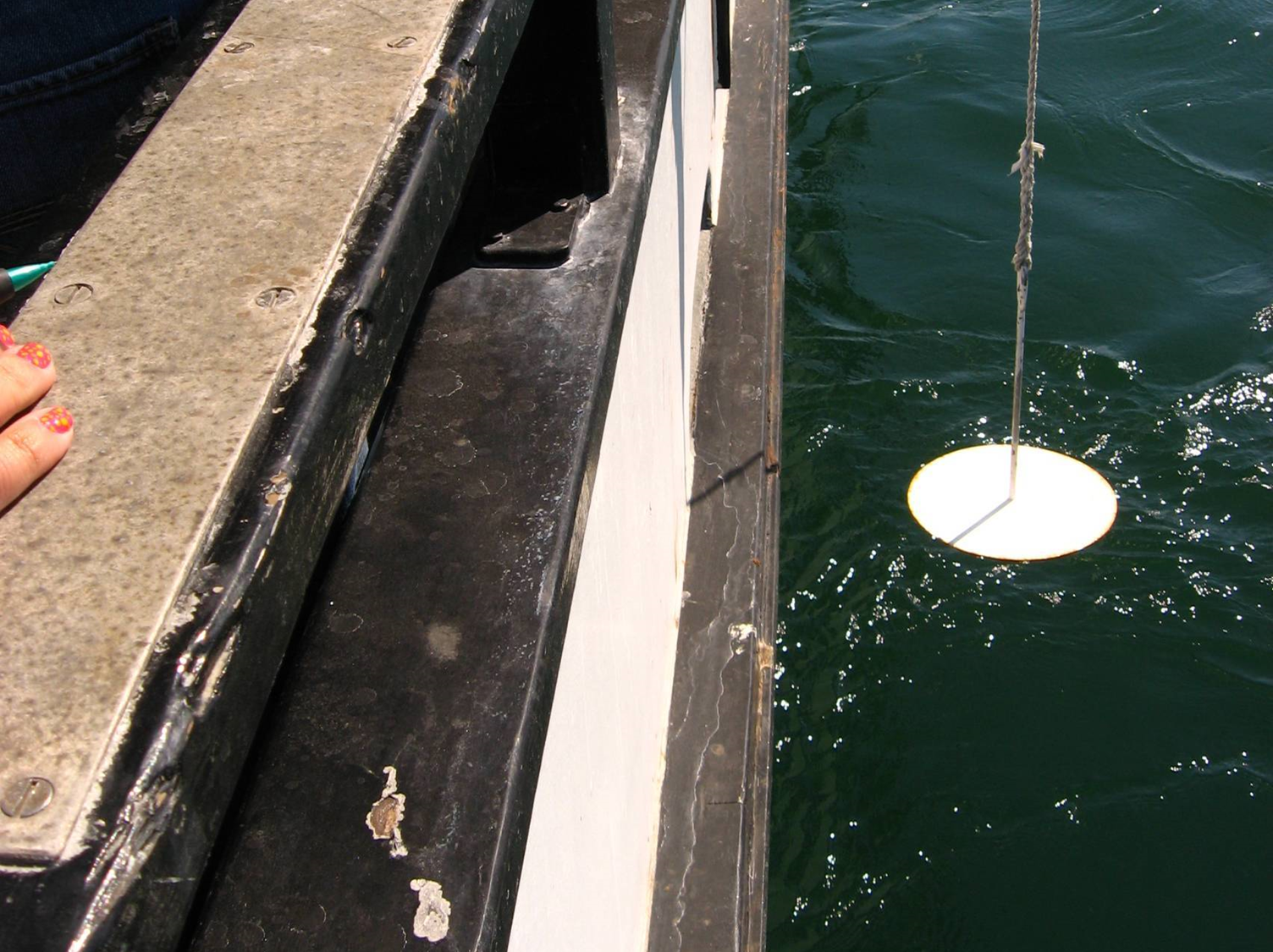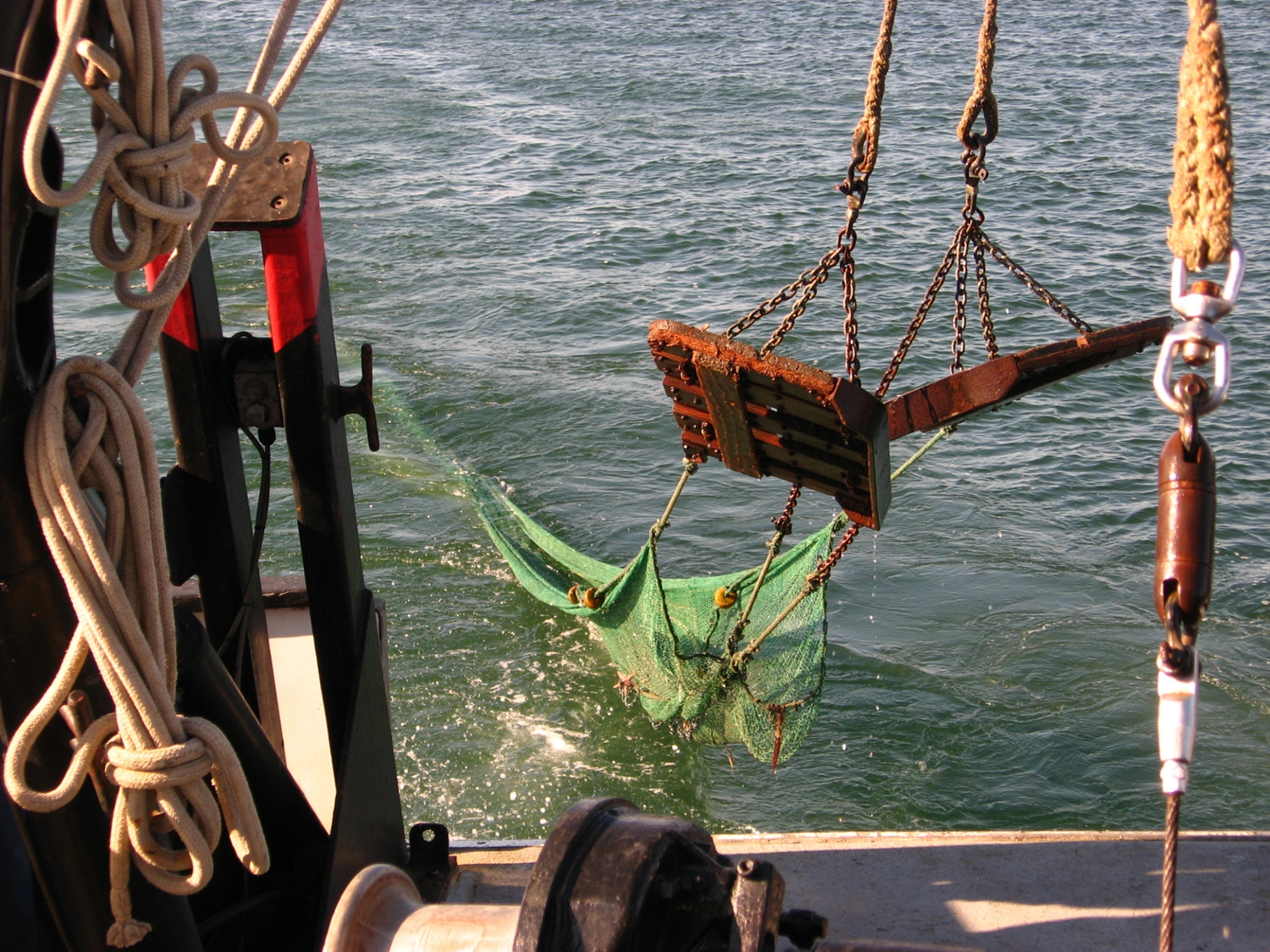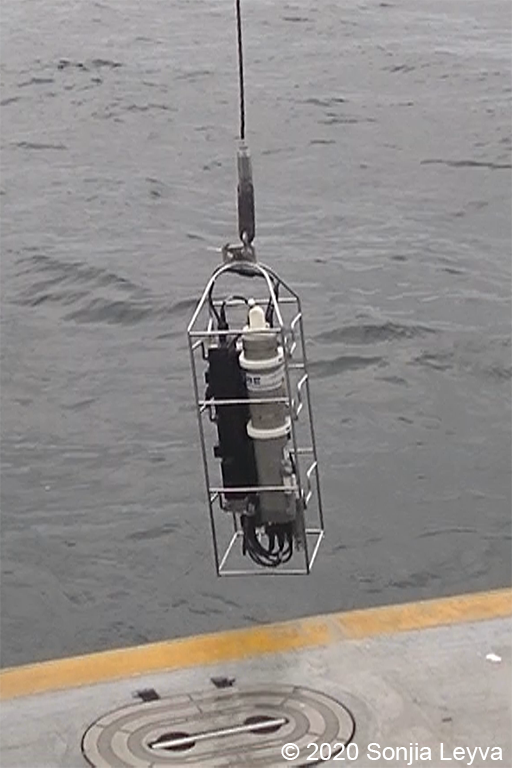Equipment and InstrumentsThere are many instruments and pieces of equipment an oceanographer uses to collect data. Below is a list of instruments used on a typical Yellowfin Cruise.
The Secchi Disk is a beautifully simple devise that is used to measure water clarity. Basically, it is a metal disk welded to a metal rod, upon which the lid of a white 5-gallon paint drum is laid on top. Attached to the rod is a rope knotted off in 1/2 meter increments. The disk is slowly lowered into the water until you can't see it anymore. That is called the extinction depth, which is a simple estimation of where the photic/aphotic zone boundary is. 
The Van Veen Mud Grab is, like the name implies, used to collect sediment samples from the seafloor.  The BioDredge is a large metal box that is open on one end. The dredge is lowered and dragged along the seafloor for a short distance before being brought back up to the surface. Benthic (bottom dwelling) flora and fauna are collected in the box to be examined on the boat. Afterwards, they are returned to the ocean. Since this can be a very damaging procedure, it is important to carefully select your site prior to dredging so that the area can recover.  What is an Otter Trawl and what does it have to do with Otters? Well, it really doesn't have anything to do with otters - it's just a mispronunciation of the word "outer". The boards attached to the top of the net are called "outer" boards which are used to stabilize and hold open the net. The net is lowered into the water to the desired depth and dragged along behind the boat for various lengths of time. Then, it is brought to the surface where we can see the neritic = swimming) organisms collected in the net. After viewing, the organisms are returned to the ocean. 
|
